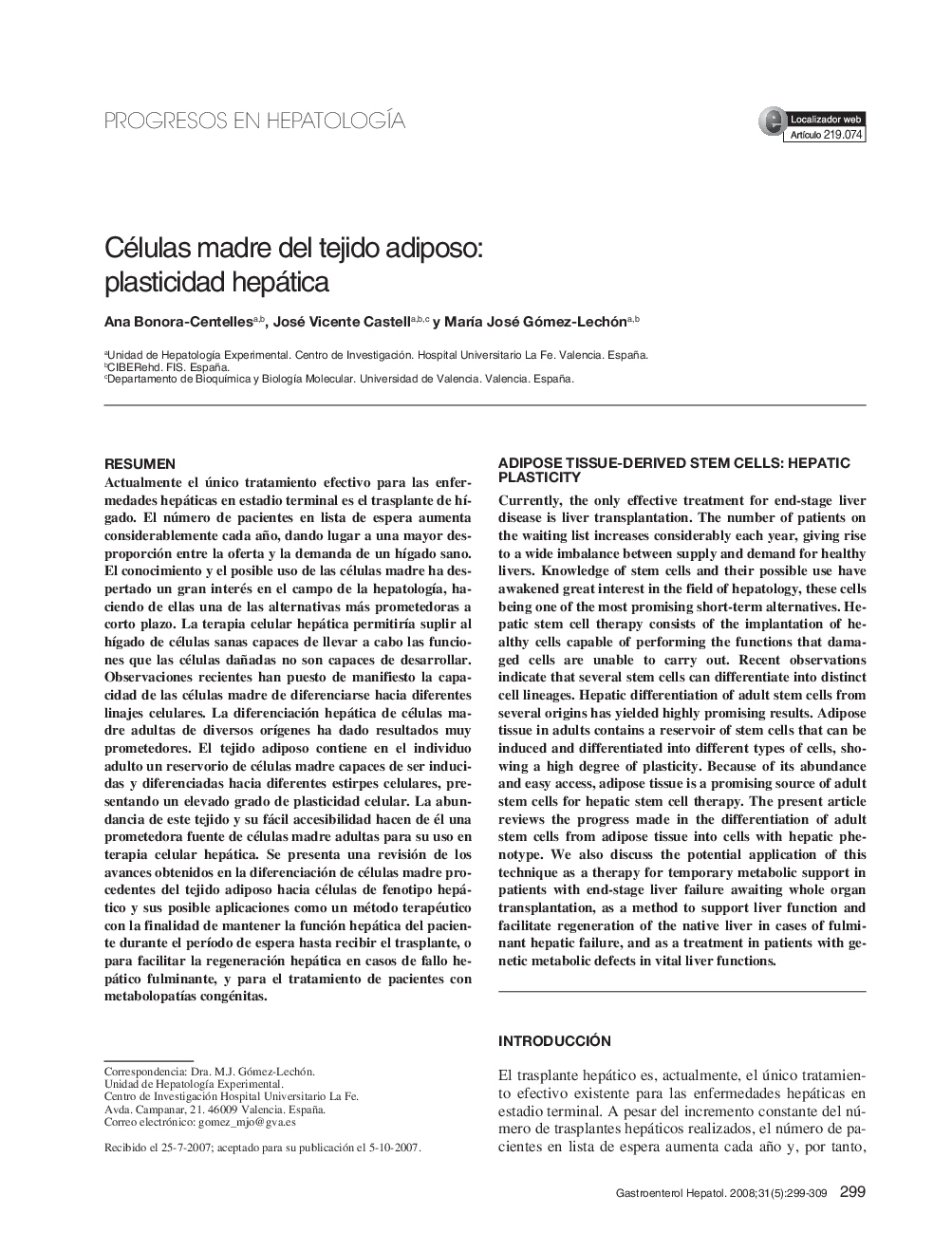| Article ID | Journal | Published Year | Pages | File Type |
|---|---|---|---|---|
| 3289155 | Gastroenterología y Hepatología | 2008 | 11 Pages |
Abstract
Currently, the only effective treatment for end-stage liver disease is liver transplantation. The number of patients on the waiting list increases considerably each year, giving rise to a wide imbalance between supply and demand for healthy livers. Knowledge of stem cells and their possible use have awakened great interest in the field of hepatology, these cells being one of the most promising short-term alternatives. He-patic stem cell therapy consists of the implantation of healthy cells capable of performing the functions that dama-ged cells are unable to carry out. Recent observations indicate that several stem cells can differentiate into distinct cell lineages. Hepatic differentiation of adult stem cells from several origins has yielded highly promising results. Adipose tissue in adults contains a reservoir of stem cells that can be induced and differentiated into different types of cells, sho-wing a high degree of plasticity. Because of its abundance and easy access, adipose tissue is a promising source of adult stem cells for hepatic stem cell therapy. The present article reviews the progress made in the differentiation of adult stem cells from adipose tissue into cells with hepatic phenotype. We also discuss the potential application of this technique as a therapy for temporary metabolic support in patients with end-stage liver failure awaiting whole organ transplantation, as a method to support liver function and facilitate regeneration of the native liver in cases of fulminant hepatic failure, and as a treatment in patients with genetic metabolic defects in vital liver functions.
Related Topics
Health Sciences
Medicine and Dentistry
Gastroenterology
Authors
Ana Bonora-Centelles, José Vicente Castell, MarÃa José Gómez-Lechón,
